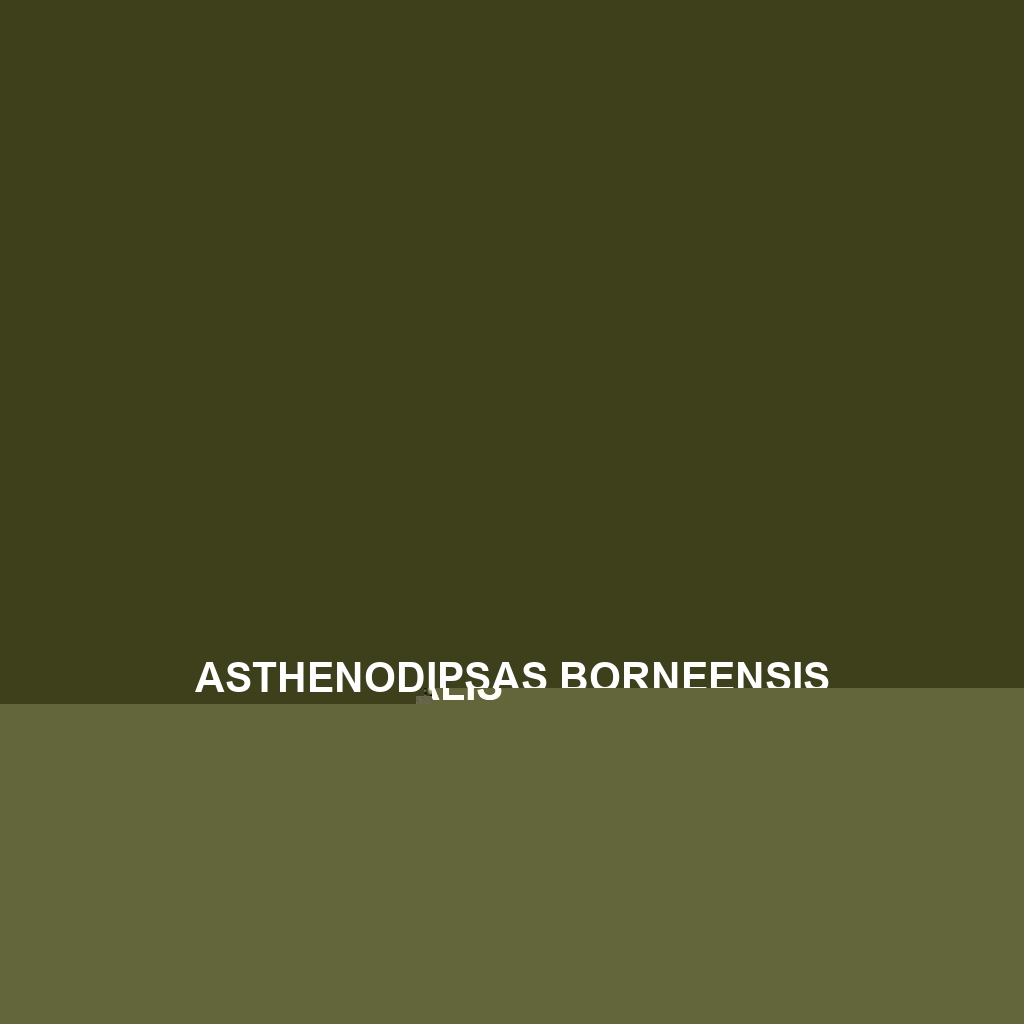Species Description: Asthenodipsas vertebralis
Common Name: Asthenodipsas vertebralis
Scientific Name: Asthenodipsas vertebralis
Habitat:
Asthenodipsas vertebralis is primarily found in the lush tropical forests of Southeast Asia. Specifically, this species inhabits regions such as Malaysia, Indonesia, and parts of the Philippines. Preferring humid environments, it can often be discovered in lowland forests, near streams, and within dense vegetation. The serpent thrives in areas that provide ample cover and humidity, making it an integral part of the rainforest ecosystem.
Physical Characteristics:
This snake typically measures between 60 to 90 centimeters in length. The coloration of Asthenodipsas vertebralis is striking, featuring a rich palette of brown and olive tones with lighter flecks, which serve as camouflage against the forest floor. A notable characteristic is its elongated body shape, slender neck, and a distinct, flattened head that aids in its burrowing lifestyle. The subtle patterns along its scales contribute to its ability to blend seamlessly into its surroundings.
Behavior:
Asthenodipsas vertebralis exhibits primarily nocturnal behavior, becoming active during the night to hunt for prey. It is a secretive species, often hiding in leaf litter or curled among vegetation during the day. This snake is known for its mild temperament and is not typically aggressive towards humans. Its movements are generally slow and deliberate, enabling it to avoid detection by predators and remain camouflaged during foraging activities.
Diet:
The diet of Asthenodipsas vertebralis primarily consists of small invertebrates, including earthworms and slugs. This species is particularly adapted to consume prey that is abundant in its forest habitat. As an opportunistic feeder, the snake plays a role in controlling the populations of these organisms, serving as a critical link in the food chain within its ecosystem.
Reproduction:
Asthenodipsas vertebralis typically breeds during the wet season, which coincides with the abundance of food sources. The female lays a clutch of 4 to 10 eggs, which are then left to incubate in the warm, humid soil. After hatching, the young snakes are independent and must quickly learn to navigate their surroundings and hunt for food, showcasing their survival skills from a young age.
Conservation Status:
Currently, Asthenodipsas vertebralis is classified as “Near Threatened” on the IUCN Red List, primarily due to habitat loss from deforestation and land conversion for agriculture. Conservation efforts are needed to protect its natural habitat and ensure the species does not move to a more critical status.
Interesting Facts:
One intriguing aspect of Asthenodipsas vertebralis is its strong ability to camouflage, which not only protects it from predators but also aids in ambushing its prey effectively. Its gentle nature has made it a subject of interest for herpetologists and reptile enthusiasts alike, fostering a fascination for this elusive snake.
Role in Ecosystem:
Asthenodipsas vertebralis plays a vital role in maintaining the ecological balance within its habitat. By controlling the populations of soft-bodied invertebrates, it contributes to nutrient cycling in the forest ecosystem. Furthermore, as a prey species for various larger predators, it serves as an essential food source, highlighting the interconnectedness of forest species.
